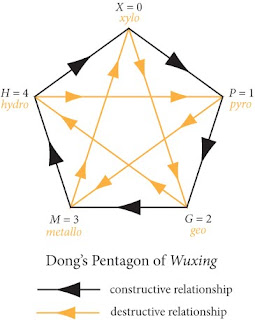On Dr. Ong Hean Tatt: Part I
Dr. Ong Heat Tatt is a botanist specializes in plant physiology. He was trained at the School of Biological Sciences, University of Malaya in the late sixties. In 1972, Ong completed his research on the physiology of the responses of plant tissues to changes in water economy and was awarded a PhD degree. However, the way I got to know Ong is via a book on Chinese culture written by him. The title of the book is The Chinese Pakua: An Expose . I was deeply disturbed by some of the arguments expounded in the book, in which Ong, based on a book by Kang and Nelson , errorneously associate the origin of some of the Chinese characters with the Biblical stories. Following Kang and Nelson, Ong sectionalized the Chinese character "禁" (meaning forbidden) to the following components: "木" (tree) + "木" (tree) + "示" (God/divinity) and proceed to explain the character as follows: God created two trees in the Garden, and He forbade Adam and Eve to eat the fru...

